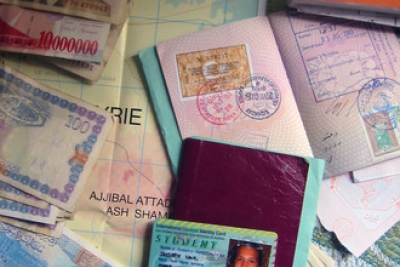
Getting the Right Visa for the Job
For green crew and sometimes established yachties looking to relocate, paperwork and travel documentation can be the cause of huge distress. Every country has its own system and list of requirements which lead to confusion and headaches for crew members trying to make sense of it all. We’ve compiled as much information about Visa and Passport applications to help with what you should do and how you should do it.
As the weather begins to warm up the Northern Hemisphere popular holiday destinations such as the Mediterranean, the French Riviera and the Caribbean are going to attract yacht owners and, as a result, crew members. This means that in order for any non-EU crew to work on yachts a Schengen Visa must be obtained. Although the visa is fairly easy to get (if you have no criminal record and provide all the needed documents in a timeous manner) the industry at large remains surprisingly misinformed on the solutions available to yacht crew.
There is a misconception that hiring non-EU crew presents hassles when it comes to paperwork and accreditation.
This has had a negative effect on the crew hiring process, with some jobs advertising only for certain passport-holders or even expressly stating: “No South Africans/Filipinos because of passport issues”.
Truth be told, crew members should not be denied job opportunities solely based on the country they come from. All nationalities can and should be given a fair chance regardless of their passport.With the right advice and some careful planning, Schengen visas can be relatively simple to understand and manage.
The Schengen Agreement, signed in 1985, includes the 22 European Union member as well as Iceland, Norway and Switzerland. The visa policy of the Schengen Area places the rest of the countries of the world into two annexes respectively. Nationals on the Annex I list (most countries in Africa, Asia and western parts of South America) need a visa if they wish to enter the Schengen Area. Nationals on the Annex II list do not require visas to enter the Schengen Area but often require permission for a stay longer than 90-days or for employment activity on land. Some Annex II countries include Canada, America, Australia and New Zealand.
When it comes to knowing what visas to apply for and how, as well as where to renew visas it is important to know that every situation should be handled on a case-by-case basis.
An explanation of the Schengen visa requirements for non-EU yacht crew is given below.
As it stands, three types of Schengen visas apply to non-EU seafarers:
1) Transit (Type B) Schengen visa
2) Short-stay (Type C) Schengen visa
3) Long-stay (Type D) Schengen visa
1 - TRANSIT (TYPE B) VISAS
Commonly referred to as an ‘entry visa’ or ‘exit visa’, this visa is needed for crew who join or leave a boat in the Schengen Area. The transit (Type B) visa is valid for a transit of no more than five days through the Schengen Area.
This visa is used mostly by crew members who need to join a boat and help take it somewhere else (i.e. an Atlantic Crossing due to depart from France) or for crew members who have an expired Schengen visa and need to fly home from a Schengen airport.
2 - SHORT-STAY (TYPE C) VISAS
Short-stay (Type C) visas are issued on a single-entry, double-entry or multiple-entry. These visas are issued to a variety of non-resident visitors to the Schengen Area including tourists, seafarers and business people.
The documents needed to apply for short-visas depend on the nature of the visit. For yacht crew, the most relevant visa is the Seaman Short-Stay (Type C) visa. A list of documents is required. This generally includes proof of employment letter, travel insurance, work contract, vessel registration papers, port letter, boat itinerary etc. that prove that the crew member will work on board a vessel.
The Seaman Short-Stay (Type C) visa is valid for 1 to 5 years depending on the crew contract and other factors like the number of previous Schengen visas in the applicant’s passport.
As a general rule of thumb, a Type C visa cannot be changed, renewed or extended from within the Schengen Area. This needs to be done at a consulate outside of the Schengen Area. The visa should be applied for in person by the crew member concerned.
3 - LONG STAY (TYPE D) VISAS
Long-stay (Type D) visas do not apply the rule of 90-days in and 90-days out. Instead, they are granted for a set period of time and can be renewed from within the Schengen Area. .
These visas are dependent on the duration and reason for the applicant’s stay in the Schengen Area including study, seasonal work (seafarers) and permanent residence.
The list of documents required to apply for this visa is similar to the short-stay (Type C) seaman visa and differs slightly from consulate-to-consulate but usually includes: the seafarer’s work contract, vessel registration papers, proof of funds etc.
It is imperative that the visa renewal process should begin two-three months before the visa is due to expire.
The good news about this visa is that it places the crew member within the Schengen ‘national’ system and allows them certain rights and responsibilities that are not available to short-stay (Type C) visa holders. It is the better visa to get if non-EU crew plan on having a life in Europe.
It is a pity that misinformation in the industry has flagged non-EU passport holders as a nuisance when really, it can all be simple and easy to understand. The best thing a non-EU citizen can do is make sure all your documents are in order so that when an opportunity does present itself you don't lose out because of tedious paperwork.
